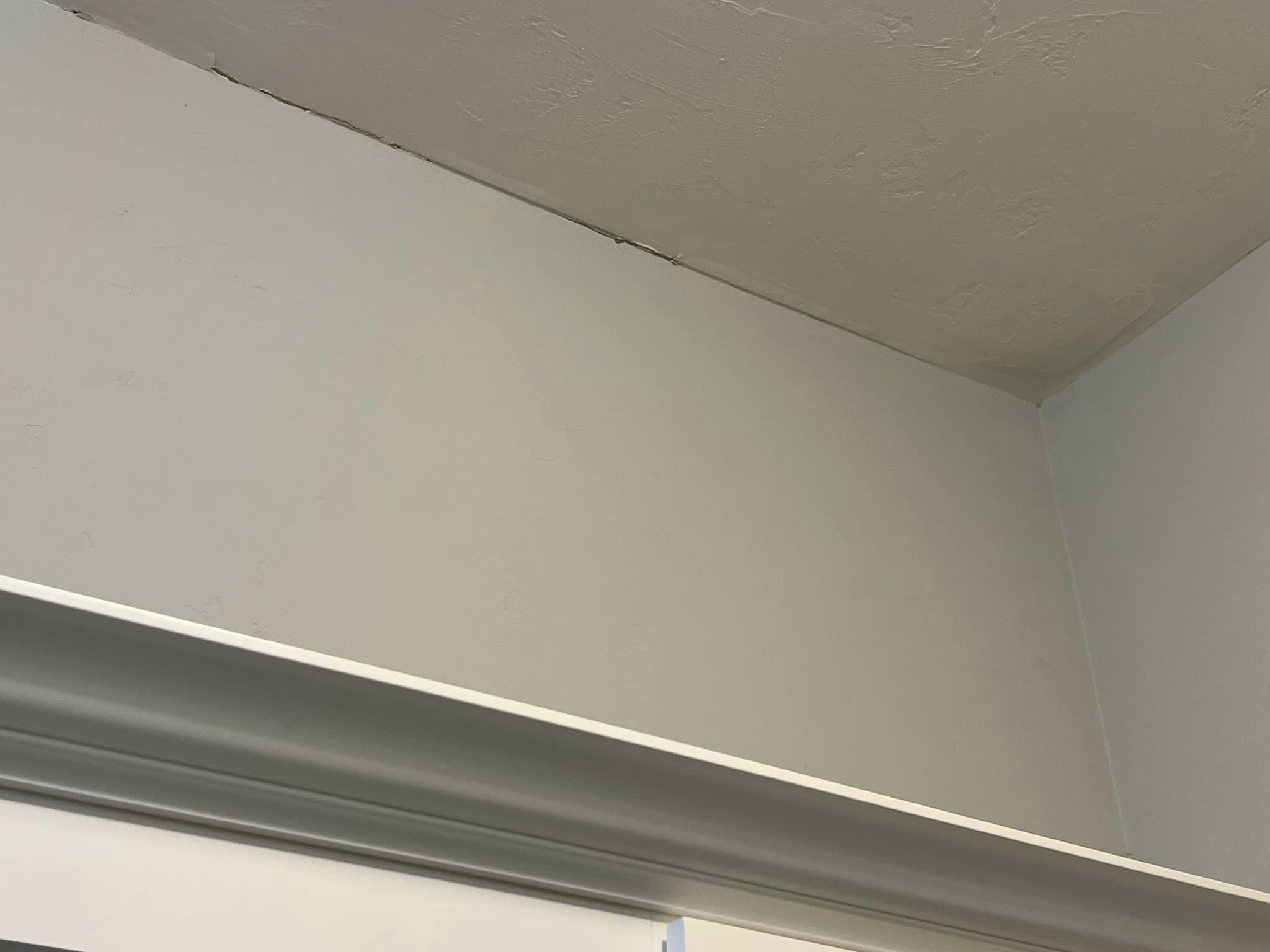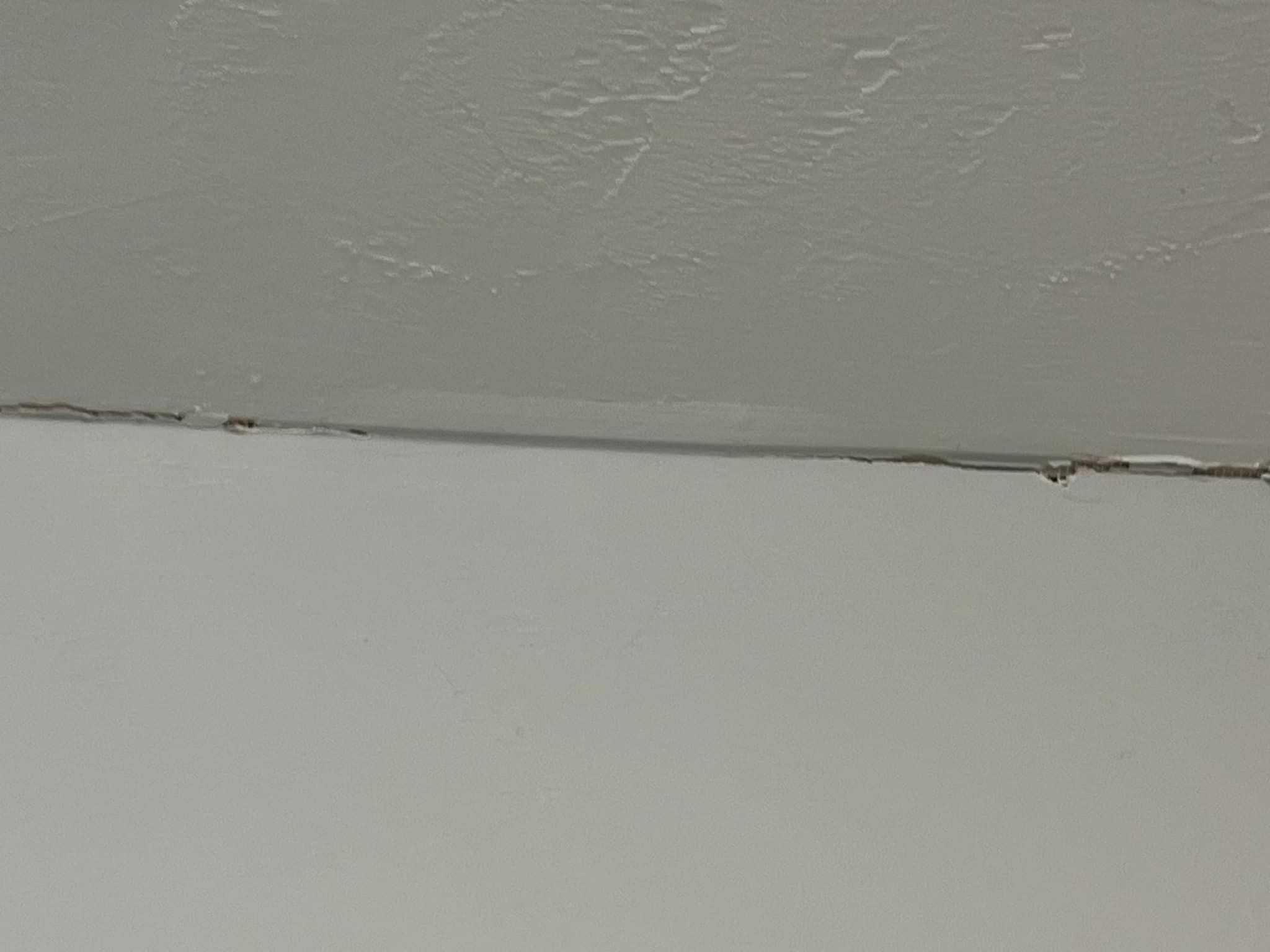Is the cracking at the wall and ceiling seam in my mother’s laundry room from settling, bad plastering, or is it simply cosmetic and can be mudded over in a house built in 2016?
1 year ago
Last Updated: June 1, 2024
Hey, I saw a bit of cracking at the seam where the wall meets the ceiling in my mom’s laundry room. The house was constructed in 2016. Do you think it’s just settling, poor plastering, or is it purely cosmetic and we can just mud over it? Thanks so much!


Is the cracking isolated to a particular area? Do you notice any texture on the ceiling? If you decide to re-tape and mud, matching that same texture on the ceiling could be challenging. If this is the only issue in the laundry room, you might want to think about installing some half-inch Shoe molding and calling it a day 
You know, I think this might actually be a better solution because even caulk eventually dries out and you have to redo it, lol.
When it comes to shoe molding, it’s a quick and easy fix. No need for patching or sanding, just a little caulk and touch-up paint. Haha. 
I’d suggest using a better caulk to fill the crack and keep an eye on it. If it cracks again and shows discoloration within a year, there might be some underlying issues. If not, it’s likely just the house settling. In my opinion (even though I’m not a professional).
Looks like it’s settling down there. I can kinda make out the tape they used in the corner. A good taping job would make it invisible. But the tape is coming loose between the ceiling and the wall. Probably due to movement. You could mention it to the builder if it’s still under warranty. Check along that wall outside the laundry room. Are there any cracks along the seam? Just give the corner a tap and see if anything crumbles or breaks.
Considering it’s in the laundry room, humidity and temperature are likely the culprits. The seam has separated due to expansion and contraction. It could be due to the materials used.
Use latex caulk. Houses naturally settle. They also contract and expand with changes in temperature and humidity. In the laundry room, you have both. The ceiling drywall should be positioned on top of the wall drywall to prevent sagging. Sometimes inexperienced drywall installers overlook this, which seems to be the issue here.
They usually place the newbies in the smaller bathrooms and utility rooms. It’s like an apprentice jail. I’m not a fan of using mesh on corners. It tends to shift a lot in a room with moisture and heat from the laundry. You can caulk it, but be prepared to touch it up regularly and the paint line never looks quite right (sharp). You might have to scuff and re-tape the seam. Ceiling texture is easier to fix and blend in. Look for similar issues in other rooms too. If the house has a warranty, making enough noise could work in your favor. There doesn’t seem to be any visible mud behind that mesh in the picture. This is the problem with it. If the mud doesn’t set properly and the mesh doesn’t reinforce it, cracks will appear rapidly. Check all corners, wall-ceiling joints, and corners around windows and doors. Having issues in multiple areas strengthens your warranty case for poor workmanship.
P.S. Another option is to caulk it thoroughly and add a crown molding. The fanciest laundry in town…
Hey there,
If you’re noticing cracks where the wall meets the ceiling, especially in a house constructed in 2016, there could be a few reasons for it. It’s a pretty common occurrence and usually not a major cause for concern. Here are a few possibilities:
1. **Settling**: Newer homes tend to settle a bit as the ground beneath them shifts slightly, which can result in minor cracks.
2. **Changes in Temperature and Humidity**: Particularly in a laundry room where there’s significant moisture and heat fluctuations, materials can expand and contract, leading to cracks.
3. **Poor Plastering or Drywall Installation**: Sometimes, the problem might lie in the initial plastering or drywall work.
To address this, you can use joint compound (mud) to fill in the cracks. Here’s a simple guide:
1. **Prepare the Area**: Get rid of any loose plaster or paint around the crack.
2. **Apply Joint Compound**: Fill the crack with joint compound using a putty knife, and make sure to smooth it out evenly.
3. **Sand and Paint**: After it dries, lightly sand it to achieve a smooth finish and then proceed to paint over it.
If the cracking is extensive or keeps recurring, it might be a good idea to have a professional inspect it just to be on the safe side.
I hope this information is helpful!
Robert
So, what actually happened is they boarded the walls before the ceiling. Oops. This occurs when the gyproc ceiling isn’t supported by the vertical wall sheets. Maybe using moulding could be the solution.